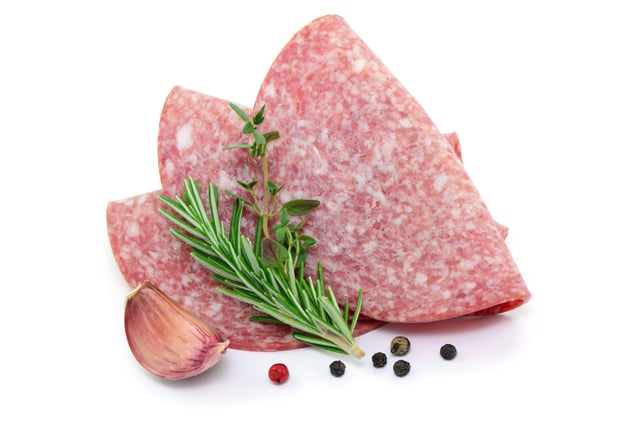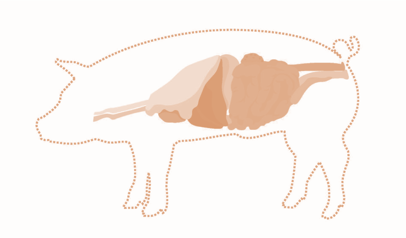 Since its inception in 2006, National Salami Day has brought this sometimes-forgotten deli meat into the limelight. Most people are familiar with the different types of salami and their distinctive tastes, but probably haven’t considered whether the ingredients used to flavor their favorite salami could be contaminated with mycotoxins.
Since its inception in 2006, National Salami Day has brought this sometimes-forgotten deli meat into the limelight. Most people are familiar with the different types of salami and their distinctive tastes, but probably haven’t considered whether the ingredients used to flavor their favorite salami could be contaminated with mycotoxins.
Mycotoxins are metabolites produced from many different species of mold. Mycotoxin contamination is typically found in grains and cereals where mold growth has occurred due to weather conditions during maturation in the fields. So how can mycotoxins make their way into one of your favorite lunch meats? In the case of salami, it’s important to look at the ingredients that go into the finished product.
Spices
- Spices have long been known to contain contaminants due to mycotoxin adulteration. Aflatoxin and ochratoxin are the most common toxins found in spices due to weather conditions. Hot and dry climate conditions during growth create the perfect combination for the mold species responsible for aflatoxin and, to a smaller extent, ochratoxin. Aspergillus flavus and A. parasiticus produce aflatoxin, and Aspergillus ochraceus and Penicillium verrucosum produce ochratoxin A. Ochratoxin contamination is possible in the field, but it more commonly develops during storage. Both toxins pose serious health risks to humans, as aflatoxins are categorized as carcinogenic to humans (Group 1), and ochratoxin A is categorized as a possible carcinogenic to humans (Group 2B).
Animal By-Products
- Animal by-products used in the production of salami may also contain mycotoxins. Beef and pork are the most frequently used meat components, but other mixtures and by-products are becoming more common. Mycotoxins make their way into farm animals’ livers and kidneys through their feed and are metabolized into other parts of their bodies. If these toxins are present during slaughter, they have the potential to show up in unexpected ways, such as in a finished product like salami.
Casings
- Casings used in the production of meat products have two categories, natural and artificial. Natural casings are made from the intestines of pigs, sheep, goats, cattle, and sometimes horses, while artificial casings are made of collagen, cellulose, or plastic. The potential for mycotoxin contamination mainly arises from the use of natural casings. The
 intestinal tract is the first introduction of mycotoxins into an animal’s system through its feed. According to the Chinese Association of Animal Science and Veterinary Medicine, “The cells of the gastrointestinal tract will potentially be exposed to the full range of ingested mycotoxins and in the highest concentrations.” Since natural casings are made from the intestines of these animals, mycotoxin contamination can be passed along in the making of casings.
intestinal tract is the first introduction of mycotoxins into an animal’s system through its feed. According to the Chinese Association of Animal Science and Veterinary Medicine, “The cells of the gastrointestinal tract will potentially be exposed to the full range of ingested mycotoxins and in the highest concentrations.” Since natural casings are made from the intestines of these animals, mycotoxin contamination can be passed along in the making of casings.
While most salami isn’t going to contain high levels of mycotoxins, it's always good practice to consider the ingredients used in your favorite foods. In the case of salami and with any finished food product, the ingredients are what make up the whole product. Though contaminated ingredients may not be readily recognizable, they contribute to the overall effects consumption of the finished product may have on human and animal health.
Trilogy understands the importance of food and feed safety and how the effects of mycotoxin contamination can harm an industry. We urge all producers to critically evaluate their ingredient lists to determine if mycotoxin analysis is a necessary step towards a healthier product.
Contact Trilogy Analytical Laboratory for all of your mycotoxin testing needs, and let us help you determine if your food meets the FDA requirements for human and animal consumption.

Share on Social Media: